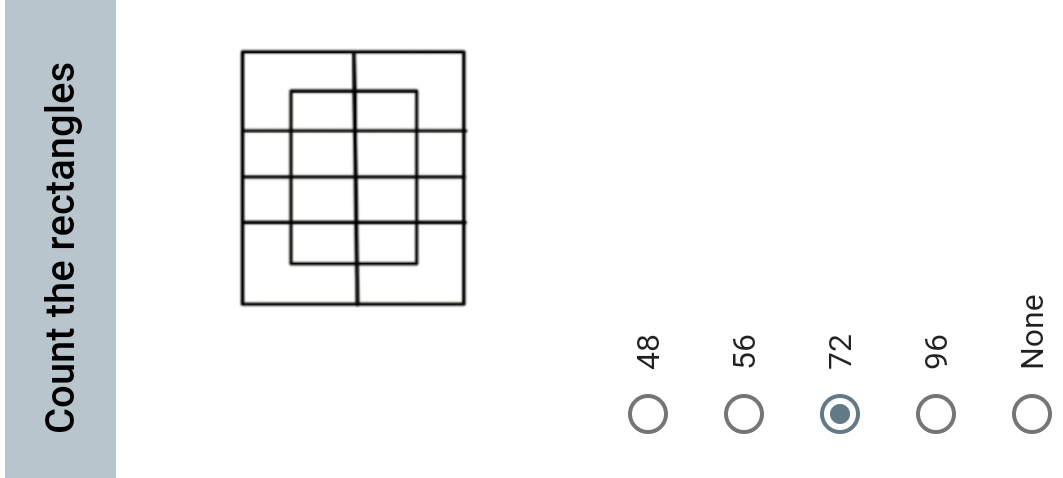
Question and Answers Forum
AllQuestion and Answers: Page 1386





Pg 1381 Pg 1382 Pg 1383 Pg 1384 Pg 1385 Pg 1386 Pg 1387 Pg 1388 Pg 1389 Pg 1390
|
Question and Answers Forum |
AllQuestion and Answers: Page 1386 |

|
| G(x)= (x+1)(x+3)Q(x) + px +q a) Given that G(x) leaves a remainder of 8 and −24 when divided by (x+1) and (x+3) respectively,find the remainder when G(x) is divided by (x+1)(x+3). b) Given that x+2 is a factor of G(x) and that the graph of G(x) passes through the point with coordinates (0,6) find G(x) |
| evaluate Σ_(n=0) ^(+∞) (1/((1+8n)^2 )) |

|
| m(p+1)=a ((q(p+1))/(r+1))=b & ((p(p+1))/(q+1))=c and ((r(p+1))/(m+1))=d find either of p,q,r,m in terms of a,b,c,d. |
| If (dy/dx) = e^(−t) (dy/dt) , find (d^2 y/dx^2 ) |

|
| Integrate: 1) ∫_3 ^( ∞) ((1/x dx)/(ln(x)(√(ln^2 x−1)))) 2) ∫_1 ^∞ ((e^x dx)/(1+e^(2x) )) 3) ∫_1 ^∞ ((2^x dx)/(x+1)) 4) ∫_2 ^∞ ((√x)/(ln(x)))dx |
| Which of the series converge and which diverge? Check by the limit comparison test. 1) Σ_(n=2) ^∞ ((1+n ln(n))/(n^2 +5)) 2) Σ_(n=1) ^∞ ((ln(n))/n^(3/2) ) 3) Σ_(n=3) ^∞ (1/(ln(lnn))) 4) Σ_(n=1) ^∞ (1/(n (n)^(1/n) )) ?? |
| let T_n =cos(narccosx) 1) calculste T_0 ,T_1 ,T_2 2)find roots of T_n 3)decompose the fraction F =(1/T_n ) |
| find ∫_(−(π/3)) ^(π/3) x^2 {cosx−sinx}^3 dx |
| factorise p(x)=1+x+x^2 +x^3 +x^5 inside C[x] and R[x] calculate p(e^(i(π/5)) ) and p(cos((π/5))) |
| calculate ∫_0 ^1 ((xdx)/(√(1+x^4 ))) |
| calculate Σ_(n=1) ^∞ ((cos(n(π/3)))/n) |
| find ∫x/x^5 −1) dx |
| Find the third degree polynomial which vanishes when x =−1 and x = 2, which has a value 8 when x =0 and leaves a remainder ((16)/3) when divided by 3x + 2. |
| solve for x and y the simultaneous equation log_3 x = y = log(2x − 1) |

|
| Find the times in a day when the hour′s, minute′s and second′s hand of a clock occupy the same angular position. [old question reposted] |
| ∫_0 ^2 x^5 (1−(x/2))^4 dx |

|
| solve inside R^3 the system { ((2x+y+z =1)),((x+2y+z =2)) :} {x+y+2z =3 |
| let f(x) =arctan(x^3 ) 1)calculate f^((n)) (x)and f^((n)) (0) 2) developp f at integr serie 3) calculate ∫_0 ^1 arctan(x^3 )dx |
| solve for real x and y:[a,b∈R] a. { ((x^3 +1=y^3 )),((x^2 +1=y^2 )) :} b. { ((x^3 +x^2 +1=y^3 )),((x^2 +x+1=y^2 )) :} c. { ((x^3 +y^2 =9xy)),((x^2 +y^3 =8xy)) :} d. { ((ax+by=2ab)),((x^2 +y^2 =4abxy)) :} |
| find ∫(v^3 −2)/(v^4 +v )dv |
| explicitez la suite u_n definie par la relation; { ((u_0 =0, u_1 =1)),((u_(n+2) =u_(n+1) +u_n ∀n∈∤N)) :} u_n =???????? −calculer la lim _(n→∞) (u_(n+1) /u_n )=??? −montre que Σ_(k=0) ^n u_k =u_(n+2) −1 voila^′ |
Pg 1381 Pg 1382 Pg 1383 Pg 1384 Pg 1385 Pg 1386 Pg 1387 Pg 1388 Pg 1389 Pg 1390 |